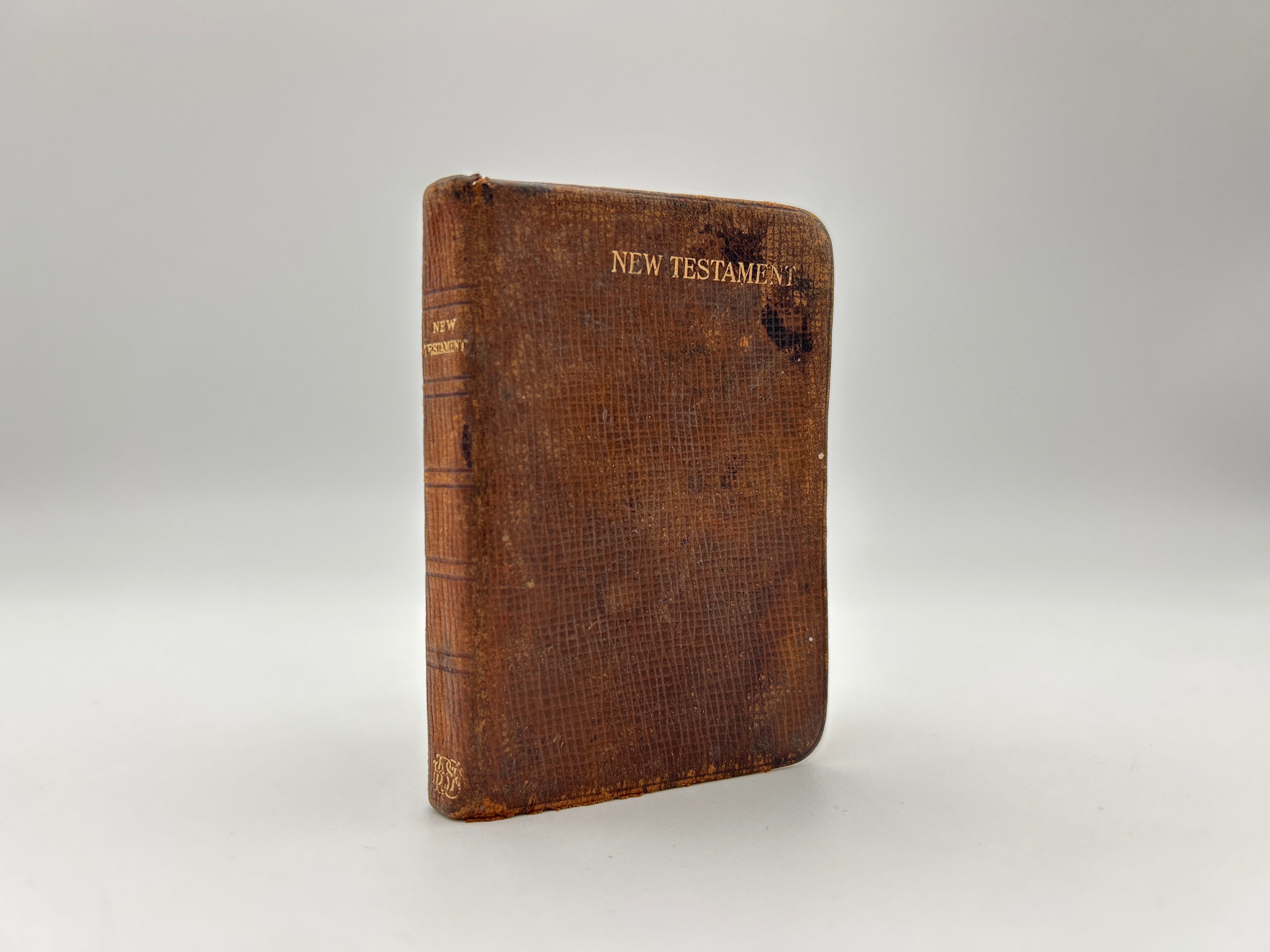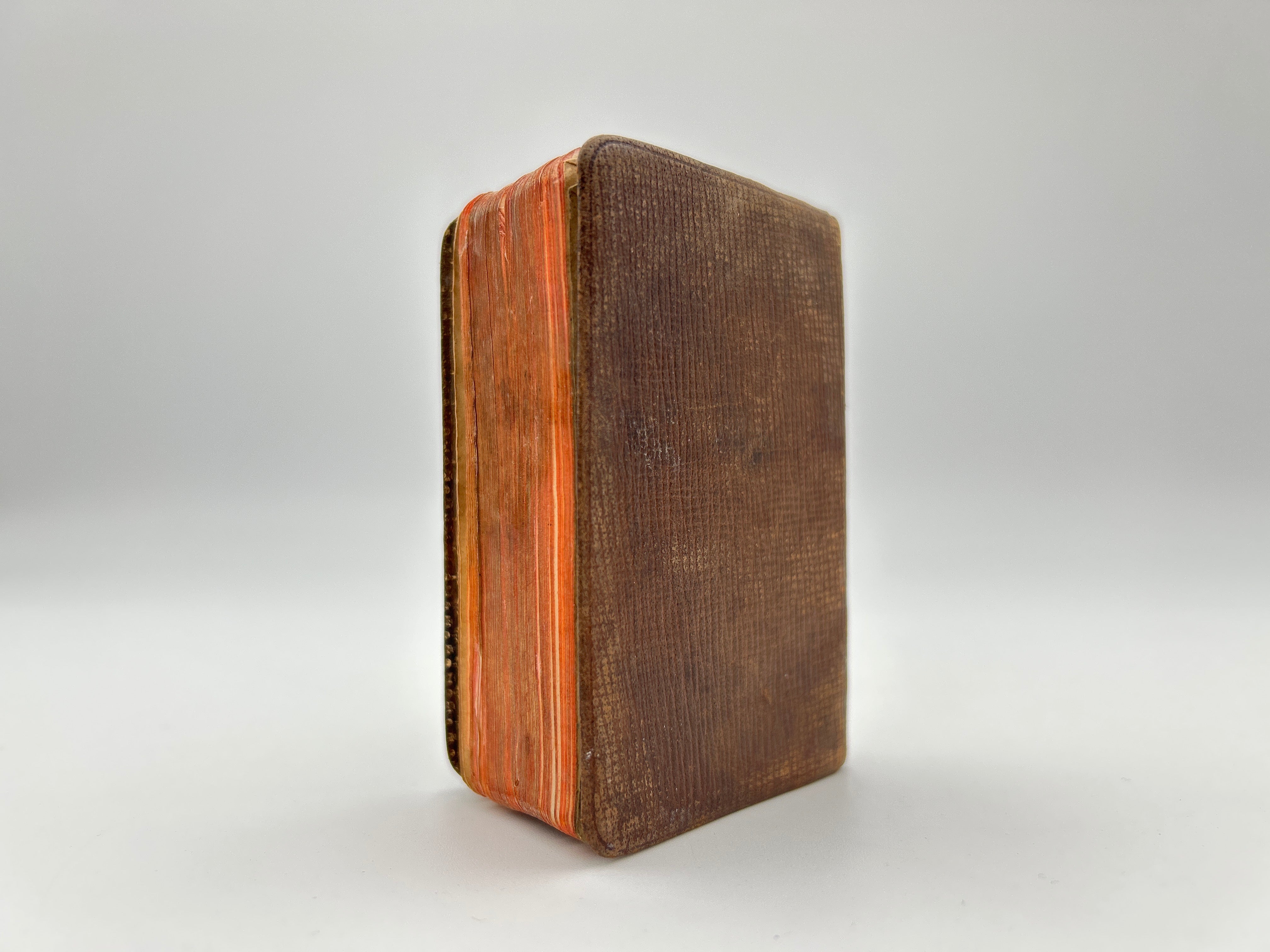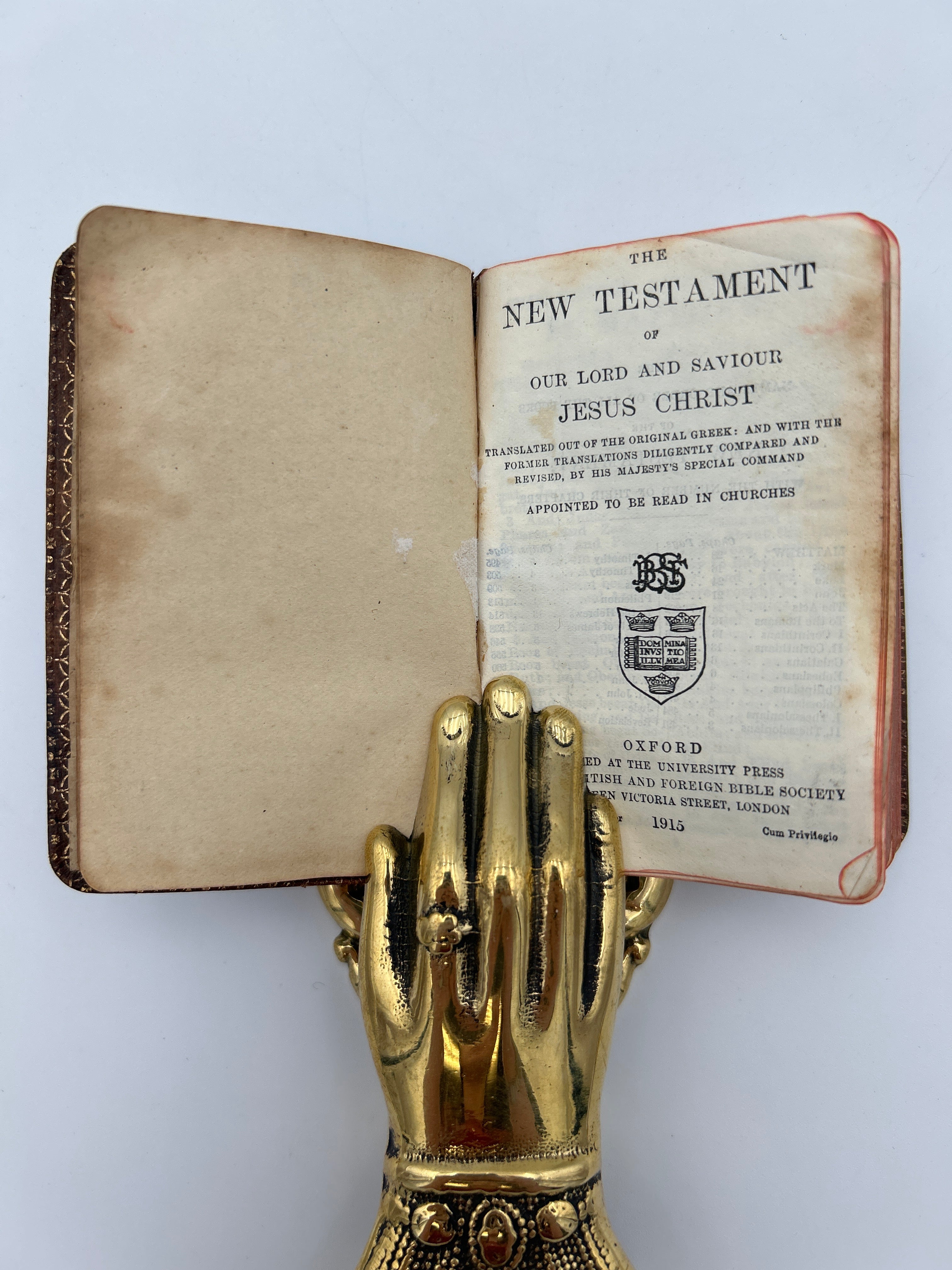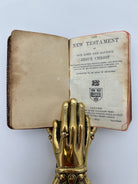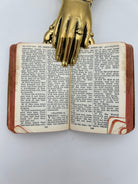Pocket Size New Testament
Couldn't load pickup availability
5B Oxford, 1915.
Notes
The Bible has played a central role in the history of printing, with its dissemination marking key developments in the evolution of the printing press. The first major book printed using movable type was the Gutenberg Bible, produced by Johannes Gutenberg in the mid-15th century, around 1455. Gutenberg's innovation revolutionized the way books were produced, making them more affordable and accessible. The printing of the Bible in vernacular languages, rather than Latin, was particularly significant in promoting literacy and religious reform, allowing wider audiences to read and interpret the sacred text themselves. This democratization of knowledge was a driving force behind the Protestant Reformation and the rise of different Christian denominations.
As printing technology advanced, the Bible was one of the most frequently printed and translated books, with over 6,000 versions in various languages today. The spread of the Bible through printing not only transformed religious practices but also shaped global literacy, education, and cultural exchange. Early printed Bibles, such as the King James Version in 1611, helped standardize language and contributed to the development of national identities. The history of Bible printing thus highlights both the cultural and religious impact of the printed word on society, cementing the Bible as a key catalyst in the broader history of communication and information technology.
Description
Brown leather binding with gilt lettering on the upper right hand corner of the upper board and spine. Gilt turn ins. Faded gilt edges. Some staining to the binding and rubbing to the extremities. Folding to the upper or lower corner of pages 193 through 304. Upper corner folded pages 549 through 596. Fully intact. Very good condition overall.
